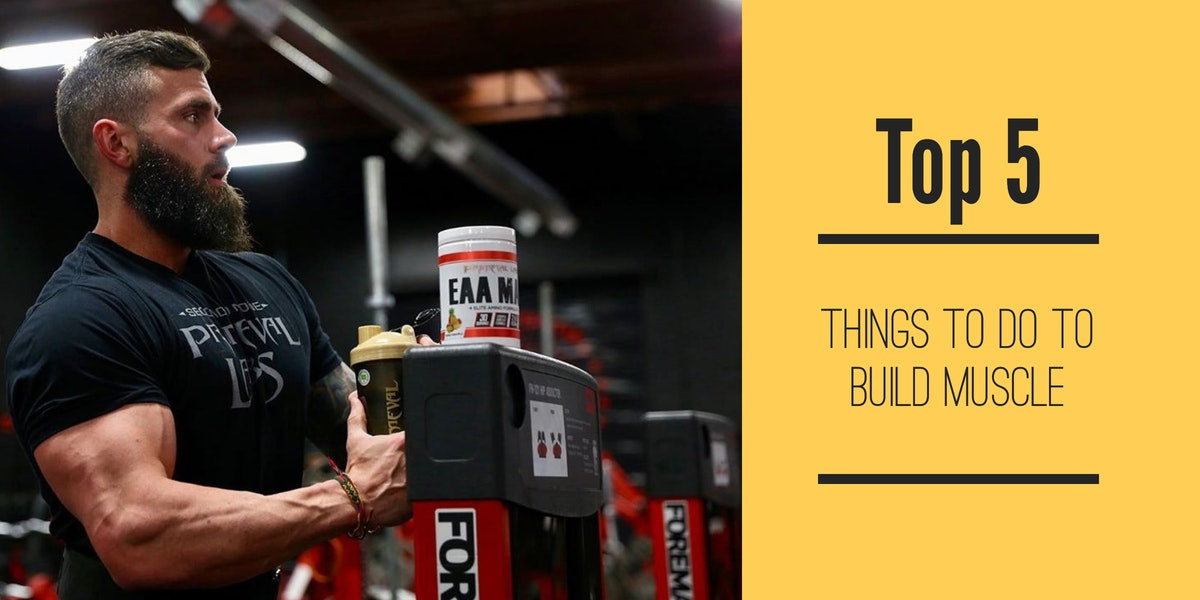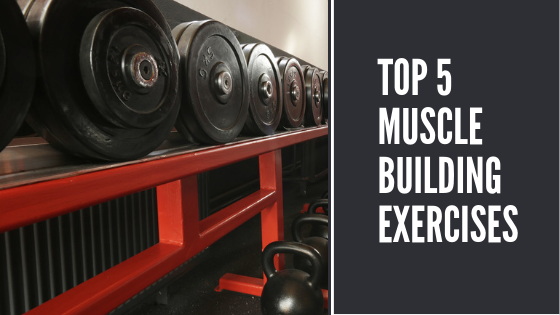If you want to know the top 5 things you need to do in order to build muscle and strength as quickly as possible, then you want to read this article.
For some individuals building muscle comes as easily as walking into the gym and looking at the weights. But for many others, the process of growing muscle and increasing strength is difficult, confusing, and torturous.
Complicating the matter is the issue that there is so much bad information readily available on the web in regards to muscle hypertrophy.
Here, we provide 5 important, foolproof things you need to do to start building muscle now. No gimmicks, shortcuts or shakeable weights here, just honest information to help you get the results you want.
SUGGESTED SUPPLEMENTS
The Top 5 Tips to Build Muscle Fast
Focus on Progression
Muscles are lazy. They like the way they are, and they will fight like hell to remain that way.
That means in order to make them change for the better (i.e. get bigger and stronger), you’re going to have to drag them, kicking and screaming the whole way.
In terms of training, this means that you need to consistently force your muscles to perform more total work (training volume) over the long term.
If over the days, weeks, and months of lifting, you are not performing exercises for more reps or more sets or lifting a heavier amount of weight, they will not get any bigger. And, if you need help dialing up the intensity in your training sessions to push harder and last longer, consider using a pre workout prior to hitting the gym.
Every time you hit the gym, you should be striving to beat your previous workout, either in terms of reps completed, weight lifted, or amount of time it takes to complete the workout.
This brings us to the next important thing required for building muscle.
Track Everything
The only way you can improve in your workouts, and ensure you’ve completed more work than you have previously is to track your progress in the gym.
This means writing down as much information as you can about each of your workouts. Write down:
- which exercises you performed
- what order you performed them
- how many reps you completed
- how many sets you did for a given exercise
- how much rest you took between sets/exercises
- how hard/easy the selected weight felt
Tracking your progress in the gym is the only way to know whether you’re pushing hard enough in your workouts and whether or not you’re actually making progress.
Tracking also applies to nutrition and body composition. The only way to know if you’re consuming enough calories and protein is by being cognizant of what foods you’re consuming and how much of them you’re consuming.
With diligent tracking comes consistent progress, yielding long-term gains in muscle size and strength.
Use a Variety of Rep Ranges
While it’s easy to think that the only way to get big is to lift heavy, research has shown that hypertrophy can be obtained using a wide variety of rep ranges, even as high as 30+ reps per set. The most important thing when it comes to building muscles is pushing them close to the point of fatigue.
There are different benefits to be gained from training in various rep ranges and to maximize your full potential, you should be using a broad spectrum of rep ranges. Perform some work in the 6-8 rep range, some in the 8-12 rep range, and even some in the 15+ rep range.
Using these different rep ranges will help stimulate the growth of the different muscle fiber types, helping you to achieve better overall muscle quality.
Patience
Muscle building is not a sprint, it’s a marathon. Even the most genetically gifted among us have spent years (even decades) to the process of building bigger, stronger muscles. Many lifters get downtrodden and unmotivated after a few months of training and realize they don’t look like Mr. Olympia contender Regan Grimes.
This is where patience comes into play.
You have to realize that each workout, each meal, each night of quality sleep is an investment in your long-term growth plan. Your retirement account doesn’t increase exponentially overnight (not usually at least), and neither does the size of your muscles.
But, with consistency and diligence, those small, frequent deposits (workouts, meals, etc.) add up to tremendous growth and massive gains in the end.
It’s also important to realize that building muscle takes longer than losing fat. So, if you’ve previously lost a considerable amount of body fat, realize that the body has to work harder to build new muscle tissue than it does to lose excess body fat.
Sleep!
Quite possibly the most overlooked, underrated aspect of building muscle is sleep. Yet, if you’re serious about making gains in size and strength as fast as possible, prioritizing sleep is an absolute non-negotiable.
Sleep is the time when the body does its maximum amount of recovery, growth, and change. To make the most of the body’s anabolic capacity while you sleep, make sure you’re doing everything in your power to set yourself up for success, such as:
- Limiting blue light exposure 2 hours before bed
- Making the temperature cool (~68℉) and the room as dark as possible
- Having a cup of herbal tea or EAA Sleep prior to bed to help lull your body into a state of relaxation
- Performing some light stretching or yoga to unwind and relax
Use these tips to help set the stage for a productive, restorative, and muscle building night of rest. And to up the ante further, on muscle building, have a serving of ISOLIT before bed so that your body has ample amounts of protein to support its growth and recovery processes while your rest.
The Bottom Line on How to Build Muscle
Building muscle requires commitment, consistency, and diligent, focused effort. If you stick to the five things we’ve laid out here, trust us you will make gains and build muscle and strength.
Block out the noise, avoid the latest fitness fad, and don’t fall for any diet gimmicks. Building muscle is about putting in honest, hard work in the gym, consuming an adequate amount of protein and calories, and getting enough quality sleep each night.
Do that week after week, month after month, and you will build muscle.












Leave a comment
This site is protected by hCaptcha and the hCaptcha Privacy Policy and Terms of Service apply.